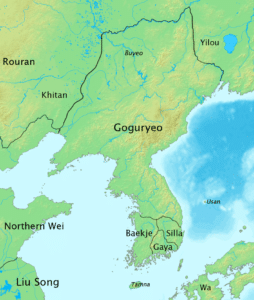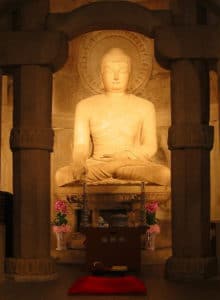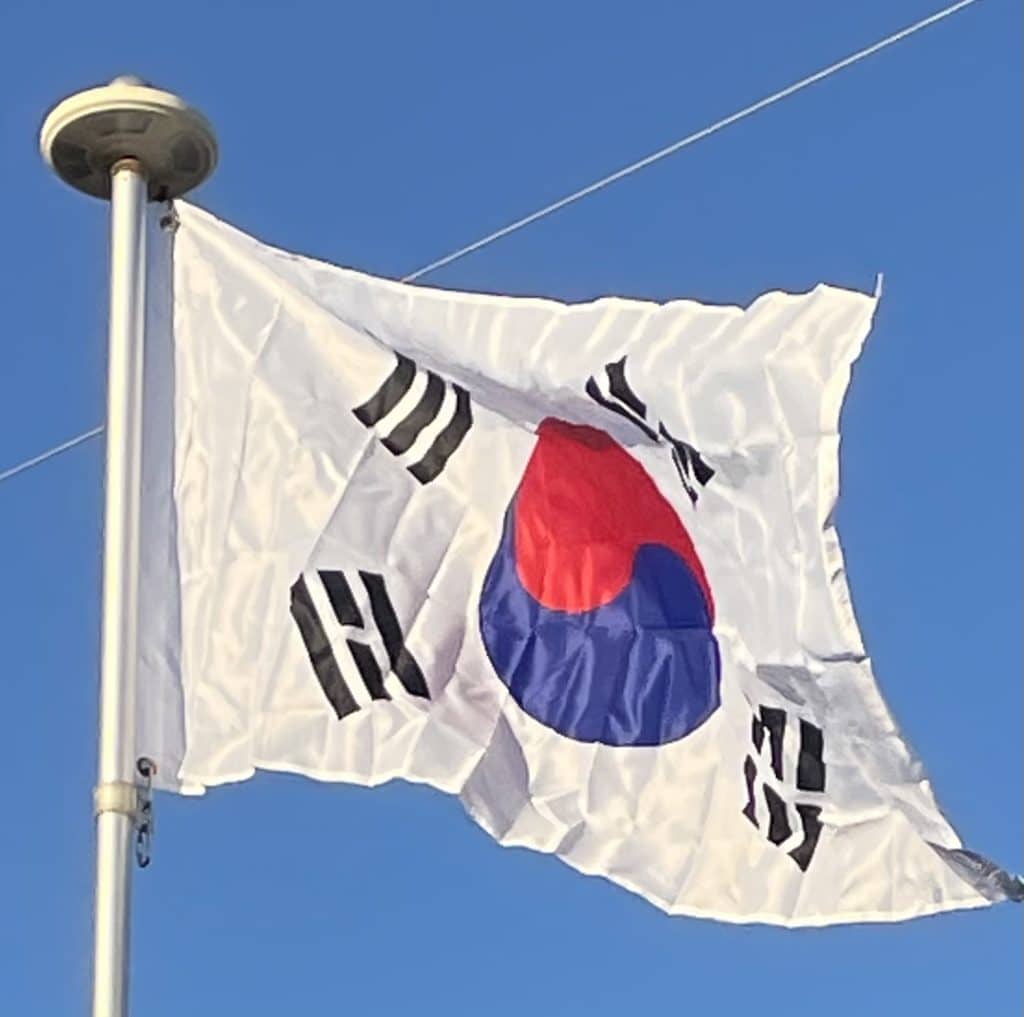
Goguryeo, the largest and most powerful among them, was a highly militaristic state, and competed with various Chinese dynasties during its 700 years of history. Goguryeo experienced a golden age under Gwanggaeto the Great and his son Jangsu, who both subdued Baekje and Silla during their times, achieving a brief unification of the Three Kingdoms of Korea and becoming the most dominant power on the Korean Peninsula. In addition to contesting for control of the Korean Peninsula, Goguryeo had many military conflicts with various Chinese dynasties, most notably the Goguryeo–Sui War, in which Goguryeo defeated a huge force said to number over a million men. Baekje was a great maritime power; its nautical skill, which made it the Phoenicia of East Asia, was instrumental in the dissemination of Buddhism throughout East Asia and continental culture to Japan. Baekje was once a great military power on the Korean Peninsula, especially during the time of Geunchogo, but was critically defeated by Gwanggaeto the Great and declined. Silla was the smallest and weakest of the three, but it used cunning diplomatic means to make opportunistic pacts and alliances with the more powerful Korean kingdoms, and eventually Tang China, to its great advantage.
The unification of the Three Kingdoms by Silla in 676 led to the North South States Period, in which much of the Korean Peninsula was controlled by Later Silla, while Balhae controlled the northern parts of Goguryeo. Balhae was founded by a Goguryeo general and formed as a successor state to Goguryeo. During its height, Balhae controlled most of Manchuria and parts of the Russian Far East, and was called the “Prosperous Country in the East”. Later Silla was a golden age of art and culture, as evidenced by the Hwangnyongsa, Seokguram, and Emille Bell.

Relationships between Korea and China remained relatively peaceful during this time. Later Silla carried on the maritime prowess of Baekje, which acted like the Phoenicia of medieval East Asia, and during the 8th and 9th centuries dominated the seas of East Asia and the trade between China, Korea and Japan, most notably during the time of Jang Bogo; in addition, Silla people made overseas communities in China on the Shandong Peninsula and the mouth of the Yangtze River. Later Silla was a prosperous and wealthy country, and its metropolitan capital of Gyeongju was the fourth largest city in the world. Buddhism flourished during this time, and many Korean Buddhists gained great fame among Chinese Buddhists and contributed to Chinese Buddhism, including: Woncheuk, Wonhyo, Uisang, Musang, and Kim Gyo-gak, a Silla prince whose influence made Mount Jiuhua one of the Four Sacred Mountains of Chinese Buddhism. However, Later Silla weakened under internal strife and the revival of Baekje and Goguryeo, which led to the Later Three Kingdoms period in the late 9th century.
Unified Dynasties:
In 936, the Later Three Kingdoms were united by Wang Geon, a descendant of Goguryeo nobility, who established Goryeo as the successor state of Goguryeo. Balhae had fallen to the Khitan Empire in 926, and a decade later the last crown prince of Balhae fled south to Goryeo, where he was warmly welcomed and included into the ruling family by Wang Geon, thus unifying the two successor nations of Goguryeo. Like Silla, Goryeo was a highly cultural state, and invented the metal movable type printing press. After defeating the Khitan Empire, which was the most powerful empire of its time, in the Goryeo–Khitan War, Goryeo experienced a golden age that lasted a century, during which the Tripitaka Koreana was completed and there were great developments in printing and publishing, promoting learning and dispersing knowledge on philosophy, literature, religion, and science; by 1100, there were 12 universities that produced famous scholars and scientists.
